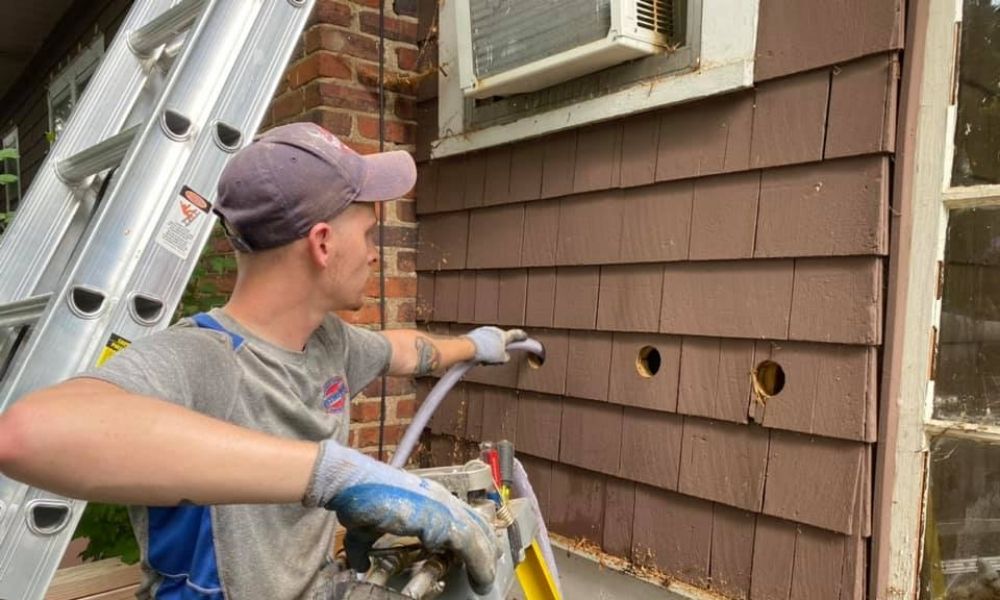Injection foam and spray foam are terms renovation contractors often bandy about, sometimes to mean the same thing. Heck, even at first glance, the average Jane might be tempted to think these types of insulation materials are the same. And, doing a double take might not help either!
So, while Premium Austin TX Attic Insulation Experts by Stellrr Insulation & Spray Foam attest that similarities exist, they admit that the two materials have some stark differences. Let’s explore some of them below:
Table of Contents
Expandability
When injected, injection foam hardens in place, filling any cracks or gaps. Since it doesn’t expand, it’s ideal for smaller spaces like around windows and doors.
On the contrary, spray foam expands as it dries, allowing it to fill the available space you need to insulate. As a result, it’s ideal for larger spaces. And, since it molds to the shape of the area being insulated, it can effectively seal off any gaps or cracks. Hence, when selecting an insulation type for your home, consider whether you need something that will expand or not.
Usage
Injection foam is typically used to fill in cracks and gaps in enclosed walls or surfaces. An installer can inject it into spaces through small holes drilled in the surface. If you build using concrete blocks, you may also use injection foam to fill the cores. The injection process creates a seal, helping to prevent air, pollutants, and pests from entering your home.
Spray foam insulation is sprayed in liquid form to fill in gaps and cracks. And since it expands, it’s not applied to external walls, as it would exert pressure and possibly affect their structure. As such, it’s ideal for insulating:
- Attics
- Around floor joists
- Hard-to-reach places like inside crawl spaces
- Basements
R-Value
Despite their similar air sealing capabilities, both types of insulation materials have different R-values. R-value is a measure of how well a material resists heat flow. The higher the R-value, the better the material is at insulating.
Compared to spray foam, injection foam has a higher R-value. Once installed, its R-value may be as high as 18 (depending on the cavity in question), which means it has better insulating properties.
What’s more, injection foam is less likely to settle over time, so it can provide long-term energy savings. If you’re looking for an insulation material with a high R-value, injection foam is a good option.
Spray foam is available in two types: open and closed cells. The latter has a higher R-value and is usually more expensive than the former. Plus, it tends to be more rigid, providing extra strength. All the same, spray foam helps create a weather barrier – thanks to its adaptability to small nooks and crannies.
Insulation Process
The process of installing spray foam insulation can be quite involving. First, it calls for the removal of old insulation from the area you plan to apply the foam. Doing so gives the foam room to expand and provides a surface to adhere to. Next, the installer mixes the spray foam and applies it to the desired area.
Once the foam is in place, it will quickly expand and harden, creating a safe and effective barrier against heat and cold. Spray foam insulation can improve your home’s energy efficiency and keep your family comfortable all year long – but only when installed as recommended.
On the flip side, injection foam is easier to install, as it does not require a remodel or teardown of your drywall. The installer can also apply the foam on old fiberglass insulation. As the foam fills the cavity, it compresses the existing insulation, creating an air-tight seal. However, cellulose insulation may need to be removed as it doesn’t compress as easily as fiberglass.
Also, the exterior of your home will determine the installation of injection foam. For instance, the installer may have to remove the siding to drill holes into the stud cavities. The contractor then channels the foam through a nozzle into the holes before plugging them.
By creating an air seal in your home, both materials work to prevent heat loss in the winter and heat gain in the summer. As a result, you can enjoy improved comfort and energy savings. The main difference, however, is that both materials work in different places.
If a significant remodel isn’t on the cards, injection foam may be the ideal insulation option. But spray foam may do the trick if you’re okay with some renovation. So, which option would you prefer? I’ll let you decide.












